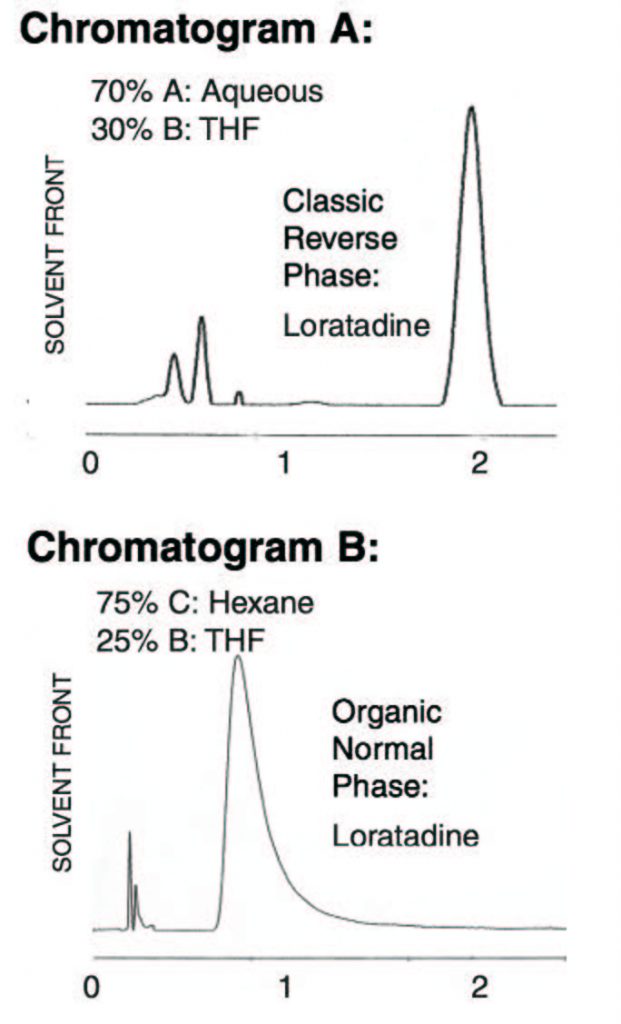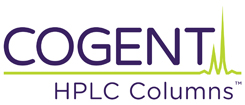Choose Reversed or Normal Phase Selectivity on the Same C18 Column
In the Chromatogram (A) below, a Reversed Phase Method Strategy is used:
- Loratadine in 100% Tetrahydrofuran (THF) elutes with the Solvent Front.
- With 70:30 DI Water / Tetrahydrofuran (THF), the Selectivity for this Compound is Reversed Phase, which is based on polarity of the compounds.
In the Chromatogram (B) below, a Normal Phase Method Strategy is used:
- At 75:25 Hexane / Tetrahydrofuran (THF) Selectivity for Loratadine is Normal Phase and based on Functional Groups of the Compound.
Implications:
Different Selectivity based on Polarity or Functional Groups of an Analyte can be chosen with the same HPLC Column: Cogent Bidentate C18. An advantages is that these Columns do not suffer from the normal difficulties experienced with traditional HPLC Columns for example Cyano, Pentafluorophenyl (F5) or Amino, when converting from Aqueous to Organic Mobile Phases and back again; continual conversions do not damage or alter the Cogent Bidentate C18 Columns.


Peak:
Loratadine
Method Conditions
Column: Cogent Bidentate C18™, 4μm, 100Å
Catalog No.: 40018-7.5
Dimensions: 75 x 4.6mm
Mobile Phase Solvents:
—A. DI Water 0.1% Trifluoroacetic Acid (TFA)
—B. THF (Tetrahydrofuran)
—C. Hexane
Flow rate: 1mL / minute
Detection: UV @ 255nm
Notes: These method strategies have many uses:
—1. Orthogonal Peak Identification
—2. Normal Phase separations on a C18 phase to achieve separations that are not possible without using ion-pair reagents in Reversed Phase.
—3. Single Column to scout for optimal methods in both Normal and Reversed Phase mode.
—4. ARP / ANP – Analytical Chromatography.
—5. NP – Preparative Chromatography.
Attachment
No 14 Orthogonal HPLC Method Development pdf 0.2 Mb Download File


